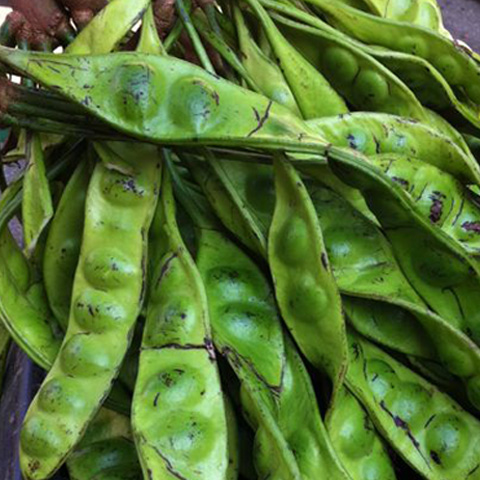BEYOND THE FOOD
GREAT CONVERSATION MAKES GREAT MEALS BETTER
Bring to your table not only exquisite, ethnic cuisine but also the cultural knowledge and insight to share with and impress your friends!

PETAI
Petai originates from the Parkia speciosa species. This twisted cluster bean, is also known as petai, pete or peteh. It is a popular culinary ingredient in Indonesia, Malaysia, Singapore, Laos, southern Thailand, Burma, and northeastern India.
In Indonesia, petai is very popular in the highlands of Java and Sumatra, especially among Sundanese, Minangkabau.
In Malaysia, petai is commonly served with sambal (chilli-based sauce used as condiment), or mixed with dried shrimp, chili peppers, red onions, belacan (shrimp paste), soy sauce and minced meat. In Thailand it is called sato), usually added to a Thai curry such as Thai Duck Green Curry, or as mu phat sato, stink bean with stir fried pork.
Petai beans or seeds look like broad beans. Like mature broad beans, they will be peeled before cooking. Petai has earned its nickname ‘stink bean’ because of its strong smell. It lingers in the mouth and body. Like asparagus, it contains certain amino acids that give a strong smell to one’s urine, an effect that can be noticed up to two days after consumption. Like other beans, petai can also cause strong-smelling flatulence.